Evaluation of Sleep Disorders, Anxiety, Depression, and Psychiatric Disorders in Hand Surgery Patients
Tan Jun*, Khan Alick, Chen Jing and Wang Yang
Hand Surgery Department Affiliated Hospital of Nantong Medical University
*Address for Correspondence: Jun Tan, Hand Surgery Department, Nantong Medical University Affiliated Hospital, Jiangsu, 20, West Temple Road, Nantong, China 226000, ORCID: orcid.org/0000-0003-0463-197X; E-mail: [email protected]
Submitted: 20 March 2018; Approved: 23 April 2018; Published: 24 April 2018
Citation this article: Jun T, Alick K, Jing C, Evaluation of Sleep Disorders, Anxiety, Depression, and Psychiatric Disorders in Hand Surgery Patients. Int J Sports Sci Med. 2018;2(1): 025-030.
Copyright: © 2018 Jun T, et al. This is an open access article distributed under the Creative Commons Attribution License, which permits unrestricted use, distribution, and reproduction in any medium, provided the original work is properly cited
Keywords: Sleeping disorders; Insomnia; Hand surgery; Depression, Anxiety somatization disorder
Download Fulltext PDF
Objective: To investigate the presence of sleep disorders, anxiety, depression, psychiatric disorders, and somatization in patients with severe traumatic hand surgery using a formal diagnostic criterion based on International Classification of Sleep Disorders icsd3, Modified Hand Injury Severity Score (MHISS), Beck Depression Inventory, and Zung Self-Rating Anxiety Scale (SAS).
Method: Total 50 patients were selected from the department of Hand Surgery at Affiliated Hospital of Nantong medical university. The patients were divided according the MHISS score and interviewed using Sleep Questionnaire, Beck Depression Inventory, and Zung Self-Rating Anxiety Scale.
Results: Sleep disorders (insomnia) were reported in 24% of the patients, psychiatric disorders in 22%, somatization disorder in 8%, severe depression in 4%, moderate depression in 8%, and mild depression in 32% of the patients. Symptoms of anxiety were reported 4% patients. According to the MHISS score 3 patients were severely injured, 7 patients were moderately injured, and 38 patients were slightly injured. The records of 2 patients were missing.
Conclusion: Our study found the presence of sleeping disorders (insomnia), depression, psychiatric disorder, and somatization disorder in hand surgery patients. Their rate of occurrence was not high, but it was not negligible. The rate of anxiety was the lowest. The incidence rate of the symptoms of severe depression, moderate depression, mild depression, and psychiatric disorder (somatization) has shown its presence in hand trauma patients but they have shown no significant correlation with the severity of hand injury. Attention should be paid to these symptoms and disorders postoperatively and refer the patients to a proper psychological assessment.
Introduction
Sleep disorders and depression are common after major trauma, accident, or other severe psychotic disorders. Besides mild injuries hand trauma may also show other severe conditions such as burns, nerve injuries, or crushing injuries. After hand surgery, sleep disorders and depression are commonly ignored [1]. “In the field of hand surgery, numerous conditions have known associations with sleep disorders, and sleep deprivation can adversely affect the patients’ outcomes, functions, and satisfaction”. Studies have shown that after major trauma the patients suffer from anxiety and stress which directly correlated to depression, and there are many diseases which are directly or indirectly related to stress, anxiety, depression, sleep disorders, (e. g., GIT problems, diabetes, hormonal disturbance) [2]. Sleep disturbances may be directly related to pathogenesis of some pain conditions [3]. To date, only few or none studies examine the sleep disorders (insomnia), anxiety, depression and psychiatric disorders (somatization) all together in hand trauma patients. Since adequate sleep plays a role in postoperative healing and also patient satisfaction [4]. It is necessary to investigate the sleeping disorders (insomnia), anxiety, depression and psychiatric disorders (somatization) all together in hand trauma patients. A study demonstrated high prevalence and close relationships of depression, anxiety, and sleep disturbance in patients with shoulder pain for 3 months or longer [5]. Another study showed that insomnia severity index was significantly high in patients with carpel tunnel syndrome [6], CTS is not an emergency condition but it is very common in the elderly. Since adequate sleep plays role in postoperative healing and also in patient satisfaction, it is necessary to investigate and characterize sleep disturbances in patients undergoing hand surgeries.
The purpose of this study is to ascertain the extent of sleeping disorders (insomnia), depression, anxiety, psychiatric disorders, and somatization in post-traumatic hand surgery patients to better understand the patients’ psychological state after the surgery.
Aim 1: Evaluate the relationship between sleep disturbance (insomnia) and hand surgery patients.
Primary hypothesis: Severity of hand injury and time since last surgery will be among the strongest factors associated with sleep disturbance outcomes.
Aim 2: Evaluate the relationship between psychiatric disorders (anxiety, depression and somatization) and exercise.
Primary hypotheses: Patients who were classified as moderately or severe depression have strong correlation with hand injuries.
Secondary hypotheses: High rate of anxiety and somatization among hand injuries patients.
According to the International Classification of Sleeping Disorders (ICSD3), sleep disorders are classified mainly into parasomnias and insomnia which are further divided into sub types (Figure 1) Sleep disorders classification.
Materials and Methods
Object of study
To investigate the presence of sleep disorders, anxiety, depression, psychiatric disorders and somatization disorder. 50 patients from hand surgery unit were selected using inclusion criteria.
Participants
Participants in this study were inpatients at the Hand Surgery Unit of Affiliated Hospital of Nantong Medical University. The patients were admitted to the hospital from 2017 January to 2017 July. The following, criteria were used: 1. the patient was injured in an accident, 2. the patient was conscious, 3. the patient did not have traumatic brain injury or lower extremity injury. The flow chart of this study (Figure 2).
Assessment tools
To perform this study, we administered the Beck Depression Inventory (BDI) (Figure 3), Zung Self-Rating Anxiety Scale (SAS) (Figure 4) and Sleep Disorders Questionnaire to the patients within six months after the surgery. Patients were divided according to their MHISS (Modified Hand Injury Severity Score) 48 patients were interviewed on the phone personally and briefly.
Sleep disorders questionnaire
This questionnaire is a screening tool for physicians to assist their clinical evaluation of insomnia. It can be used to screen for a sleep disorder. The physician should perform a more detailed clinical evaluation and/or refer to specialist when appropriate. We used question 1 to question 9. Circadian rhythm disorders, movement disorders and parasomnias were not the part of our study (Figure 5).
Access to data
During this study, 50 patients were selected from the Hand Surgery Unit of Nan tong Medical University Affiliated Hospital. The patients were divided according the Modified Hand Injury Severity Score (MHISS) and interviewed using Sleep Questionnaire, Beck Depression Inventory, and Zung Self-Rating Anxiety Scale.
Statistical analysis using spss software
For statistical analysis, we used SPSS software version 20. Descriptive and correlative analyses were performed. We analyzed the correlation between sleep disorders and psychiatric symptoms in hand trauma. We set p < 0.05 was significant. The average scores of MHISS (18 ± 16), anxiety (28 ± 6), depression (5 ± 4), sleeping disorder (insomnia) (23089 ± 5449), psychiatric disorder (1816 ± 989), and somatization disorders (1.7 ± 1) with a mean (± SD).
Results
Sleep disorders (insomnia) were reported in 24% of the patients, psychiatric disorders in 22%, somatization disorder in 8%, severe depression in 4%, moderate depression in 8%, and mild depression in 32% of the patients. Symptoms of anxiety were reported in 4% patients.
According to the MHISS score 3 patients were severely injured, 7 patients were moderately injured, and 38 patients were slightly injured. The records of 2 patients were missing.
Significance
The results of this study can lead us to a conclusion that pre-operatively and postoperatively counseling with the patients, rehabilitation programs and a good understanding of psychological aspect of patients such anxiety, depression, insomnia, somatization etc. can provide good outcome and functional satisfaction to the patients.
Conclusion
There was no significant correlation between insomnia, depression, and psychiatric disorder. In addition, the difference was statistically significant (p < 0.005) the other symptoms were related to each other. Descriptive correlations* Expressed significant correlation between the two factors (Table 1).
Discussion
Sleep disruption frequently occurs in acute care hospital units. The sleep of patients in critical care and acute care hospital units has been studied since the 1980’s. In recent years studies, have found that 42 to 91% of the adult subjects hospitalized on medical-surgical units continue to report disturbed sleep. Inpatients have been studied on medical and/or surgical units, unit’s surgical orthopedic units, and stem cell transplant units.
For centuries, it has been thought that sleep enhances recovery from an illness. During an illness, a person will extend their time in bed, rationalizing that sleep improved the response of the immune system. Research has found that sleep loss is known to have adverse effects on health. In a review study, sleep loss was associated with reduced vaccine effectiveness, obesity, impaired glucose tolerance, and cardiovascular inflammatory processes [7]. Sleep behavior is interactive with the immune system. There is bidirectional communication between these two systems. The central nervous system is linked with innate immunity and antibody-mediated (humoral) immunity responses [8-10].
The focus of our research on the association of hand injuries with insomnia, psychiatric disorders (anxiety, depression and somatization) whether these disorders are consistently associated with hand injuries and their rate of occurrence. Several studies have shown that upper extremity injuries have correlations with various psychological disorders [11]. A study reported high rates of depression and anxiety in patients with tennis elbow [12]. In later stages of injury healing i.e. fracture healing the emotional difficulties, rather than pain or function, had the greatest association with sleep [13]. A strong association between depression symptoms and disability and pain scores was reported [14]. Children with juvenile idiopathic arthritis had significantly sleep disturbance, sleep onset delay, sleep anxiety, sleep-disordered breathing, night awakenings, parasomnias [15]. A separate study of fibro myalgia patients treated sleep as a mediator of the pain-depression pathway, finding that sleep quality mediates the relationship between pain and symptoms of depression [16]. Another study of fibromyalgia patients found evidence in support of a model in which pain was a mediator of the pathway from sleep impairment to depressive symptoms [17].
Previous studies have shown that somatization is higher in females and patients with recurrent abdominal pain and has been associated with other psychiatric symptoms. Somatization can lead to costly and unnecessary medical testing and treatments and at-risk patients may over utilize medical services. It is possible that somatization may be related to mood disorders, and delays in recovery may be associated with overlap of subjective somatization symptoms and feelings of depression [18]. Other researchers addressed depression and somatization as separate entities. In two studies, investigators reported that the depression and somatization sub scores were associated with work status [19-20]. Somatization, one psychological factor, is “a tendency to experience and communicate somatic distress in response to psycho-social stress and to seek medical help for it. Somatising tendency is a predisposition to be more aware of and to worry about, common somatic symptoms [21]. Somatising tendency is a predisposition to be more aware of and to worry about, common somatic symptoms. Longitudinal studies have shown that somatising tendency is not merely a consequence of musculoskeletal pain but a risk factor for multistage musculoskeletal pain [22]. Several studies of patients with orthopedic trauma have focused on measures of functional recovery, complications, mortality and costs [23-26]. Estimates of psychological symptoms following musculoskeletal trauma have ranged from 6.5% to 51.0% [27-32].
The correlation between psychological distress and physical complaints has been reported by several authors [33-37]. In survey of orthopedic trauma patients found that 1 in 5 patients met the criteria for psychological illness [38]. Poor functional outcomes have been correlated with poor emotional health, such as anxiety, depression, poor coping skills, and poor social support [39,40]. It is well established that the emotional health of the patient influences the outcome of many common orthopedic surgeries. Patients who, because of emotional health challenges (such as depression or grieving), are at risk of having less functional improvement after orthopedic surgery can be identified preoperatively. Teams of clinicians, including physical therapists, behavioral psychologists, and other support professionals can provide a better outcome for the patients.
Sleep disorders, depression and psychiatric disorders in hand trauma unit is a vast topic in this study we cannot cover all the aspects of hand trauma causing insomnia, depression and psychiatric disorders because the severity and location of injury is different e.g. elbow joint, shoulder, wrist joint etc. In our study we found the presence of sleeping disorders (insomnia), depression, psychiatric disorder, and somatization disorder in the hand surgery patients. We did not find any significant correlation between insomnia and depression and psychiatric disorders but we found the presence of insomnia, depression and somatization in hand surgery patients postoperatively. Further longitudinal studies needed combining with psychological counseling, good rehabilitation programs and their outcomes.
Conclusion
The treatment of sleep disorders is directed at reducing morbidity, reducing excess mortality and improving quality of life for the patient and family [41]. The results of this study should allow hand surgeons to counsel patients regarding the prevalence and expected improvement of sleep disorders (insomnia), depression and psychiatric disorders throughout the healing process and better to refer the patients to a proper psychological counseling. Hand surgeons should be aware of psychological problems related to hand injuries. With a clear understanding of all aspects of injuries, surgeons can serve patients better and possibly decrease the frequency of depression, insomnia, anxiety, and other psychiatric disorders.
Limitations
Due to the rules and restriction of the hospital ethical committee, we did not perform any drugs trials for the treatment of these disorders. Other factors such as economic conditions, hospital expenses, and home environment were not addressed in this study.
Ethical Approval
The study was approved by the Hospital Ethical Committee. Informed Consent Informed consent was obtained from all the participating patients.
- Gaspar MP, Kane PM, Jacoby SM, Gaspar PS, Osterman AL. Evaluation and management of sleep disorders in the hand surgery patient. Hand Surg Am. 2016; 41: 1019-1026. https://goo.gl/Vfts5F
- Wu H, Zhang F, Cheng W, Lin Y, Wang Q. Factors related to acute anxiety and depression in inpatients with accidental orthopedic injuries. Shanghai archives of psychiatry. 2017; 29: 77-84. https://goo.gl/CkWHSJ
- Tekeoglu I, Ediz L, Hiz O, Toprak M, Yazmalar L, Karaaslan G. The relationship between shoulder impingement syndrome and sleep quality. Eur Rev Med Pharmacol Sci. 2013; 17: 370-374. https://goo.gl/J7nw85
- Austin L, Pepe M, Tucker B, Ong A, Nugent R, Eck B, et al. Sleep disturbance associated with rotator cuff tear: correction with arthroscopic rotator cuff repair. Am J Sports Med. 2015; 43: 1455-1459. https://goo.gl/nAa1Fu
- Chul-HyunCho, Sung-WonJung, Jin-YoungPark, Kwang-SoonSong, Kyeong-ImYu. Regarding "Is shoulder pain for three months or longer correlated with depression, anxiety, and sleep disturbance?" J Shoulder Elbow Surg. 2013; 22: 222-228. https://goo.gl/4o7DEf
- Patel JN, McCabe SJ, Myers J. Characteristics of sleep disturbance in patients with carpal tunnel syndrome. Hand (N Y). 2012; 7: 55-58. https://goo.gl/cb6ZD2
- Imeri L, Opp MR. How (and why) the immune system makes us sleep. Nat Rev Neurosci. 2009; 10: 199-210. https://goo.gl/rGi6JP
- Benca RM, Quintas J. Sleep and host defenses: a review. Sleep. 1997; 20: 1027-1037. https://goo.gl/5szZPH
- Krueger JM, Fang J, Taishi P, Chen Z, Kushikata T, Gardi J. Sleep. Physiologic role for IL-1 beta and TNF-alpha. Ann N Y Acad Sci. 1998; 856: 148-159. https://goo.gl/yWDvBi
- Opp MR. Cytokines and sleep. Sleep Med Rev. 2005; 9: 355-364. https://goo.gl/jRmcbD
- Peters RM, Menendez ME, Mellema JJ, Ring D, Vranceanu AM. Sleep Disturbance and Upper-Extremity Disability. Arch Bone Jt Surg. 2016; 4: 35-40. https://goo.gl/39JJRM
- Alizadehkhaiyat O, Fisher AC, Kemp GJ, Frostick SP. Pain, functional disability, and psychologic status in tennis elbow. Clin J Pain. 2007; 23: 482-489. https://goo.gl/KirNGs
- Shulman BS, Liporace FA, Davidovitch RI, Karia R, Egol KA. Sleep disturbance after fracture is related to emotional well-being rather than functional result. J Orthop Trauma. 2015; 29: 146-150. https://goo.gl/AFrvxR
- Gong HS, Lee JO, Huh JK, Joo Han Oh, Kim SH, Baek GH. Comparison of depressive symptoms during the early recovery period in patients with a distal radius fracture treated by volar plating and cast immobilisation. Injury. 2011; 42: 1266-1270. https://goo.gl/6XqjtK
- Bloom BJ, Owens JA, McGuinn M, Nobile C, Schaeffer L, Alario AJ. Sleep and its relationship to pain, dysfunction, and disease activity in juvenile rheumatoid arthritis. J Rheumatol.2002; 29: 169-173. https://goo.gl/TJDTP5
- Miró E, Martínez MP, Sánchez AI, Prados G, Medina A. When is pain related to emotional distress and daily functioning in fibromyalgia syndrome? The mediating roles of self-efficacy and sleep quality. Br J Health Psychol. 2011; 16: 799-814. https://goo.gl/Qg1tak
- Hamilton NA, Pressman M, Lillis T, Atchley R, Karlson C, Stevens N. EvaluatingEvidence for the Role of Sleep in Fibromyalgia: A Test of the Sleep and PainDiathesis Model. Cognit Ther Res. 2012; 36: 806-814. https://goo.gl/TdPJCv
- Yoder JC, Staisiunas PG, Meltzer DO, Knutson KL, Arora VM. Noise and sleep among adult medical inpatients: far from a quiet night. Arch Intern Med. 2012; 172: 68-70. https://goo.gl/7SjvFT
- Root JM, Zucker Braun NS, Wang L, Winger DG, Brent D, Kontos A, et al. History of Somatization Is Associated with Prolonged Recovery from Concussion. J Pediatric. 2016; 174: 39-44. https://goo.gl/jRdGmw
- Edmond SL, Werneke MW, Hart DL. Association between centralization, depression, somatization, and disability among patients with nonspecific low back pain. J Orthop Sports Phys Ther. 2010; 40: 801-810. https://goo.gl/XaeQey
- Lipowski ZJ. Somatization: the concept and its clinical application. 1988; 145: 1358-1368. https://goo.gl/sa57nC
- Löwe B, Spitzer RL, Williams JB, Mussell M, Schellberg D, Kroenke K. Depression, anxiety and somatization in primary care: syndrome overlap and functional impairment. Gen Hosp Psychiatry. 2008; 30: 191-199. https://goo.gl/zJaTyP
- Fujii T, Oka H, Katsuhira J, Tonosu J, Kasahara S, Tanaka S, et al. Disability due to knee pain and somatising tendency in Japanese adults. BMC Musculoskelet Disorder. 2018; 19: 23. https://goo.gl/1BkgzP
- Moed BR, Yu PH, Gruson KI. Functional outcomes of acetabular fractures. J Bone Joint Surg Am. 2003; 85-A: 1879-1883. https://goo.gl/c25NWk
- Pollak AN, McCarthy ML, Bess RS, Agel J, Swiontkowski MF. Outcomes after treatment of high-energy tibial plafond fractures. J Bone Joint Surg Am. 2003; 85-A: 1893-1900. https://goo.gl/hDvryZ
- Adams JE, Davis GG, Alexander CB, Alonso JE. Pelvic trauma in rapidly fatal motor vehicle accidents. J Orthop Trauma. 2003; 17: 406-410. https://goo.gl/JRLcSw
- Richmond J, Aharonoff GB, Zuckerman JD, Koval KJ. Mortality risk after hip fracture. J Orthop Trauma. 2003; 17: 53-56. https://goo.gl/QNchVU
- Rusch MD. Psychological response to trauma. Plast Surg Nurs.1998; 18: 147-153.
- Starr AJ, Smith WR, Frawley WH, Borer DS, Morgan SJ, et al. Symptoms of posttraumatic stress disorder after orthopaedic trauma. J Bone Joint Surg Am. 2004; 86-A: 1115-1121. https://goo.gl/gfvtsu
- Dijkstra PU, Groothoff JW, ten Duis HJ, Geertzen JH. Incidence of complex regional pain syndrome type I after fractures of the distal radius. Eur J Pain. 2003; 7: 457-462. https://goo.gl/TyZhfL
- Mason S, Wardrope J, Turpin G, Rowlands A. The psychological burden of injury: an 18-month prospective cohort study. Emerg Med J. 2002; 19: 400-404. https://goo.gl/b3YB34
- McCarthy ML, MacKenzie EJ, Edwin D, Bosse MJ, Castillo RC, Starr A; LEAP study Group. Psychological distress associated with severe lower-limb injury. J Bone Joint Surg Am. 2003; 85-A: 1689-1697. https://goo.gl/rDyiZs
- Michaels AJ, Michaels CE, Moon CH, Zimmerman MA, Peterson C, Rodriguez JL. Psychosocial factors limit outcomes after trauma. J Trauma. 1998; 44: 644-648. https://goo.gl/GeDBVV
- Zatzick DF, Jurkovich GJ, Gentilello L, Wisner D, Rivara FP. Posttraumatic stress, problem drinking, and functional outcomes after injury. Arch Surg. 2002; 137: 200-205. https://goo.gl/MHGwfp
- Dyrehag LE, Widerström-Noga EG, Carlsson SG, Kåberger K, Hedner N, Mannheimer C, et al. Relations between self-rated musculoskeletal symptoms and signs and psychological distress in chronic neck and shoulder pain. Scand J Rehabil Med. 1998; 30: 235-242. https://goo.gl/AQDMwQ
- Badcock LJ, Lewis M, Hay EM, McCarney R, Croft PR. Chronic shoulder pain in the community: a syndrome of disability or distress?. Ann Rheum Dis. 2002; 61: 128-131. https://goo.gl/aC2U7s
- Cho CY, Hwang IS, Chen CC. The association between psychological distress and musculoskeletal symptoms experienced by Chinese high school students. J Orthop Sports Phys Ther. 2003; 33: 344-353. https://goo.gl/f5hZUG
- Karnezis IA, Fragkiadakis EG. Association between objective clinical variables and patient-rated disability of the wrist. J Bone Joint Surg Br. 2002; 84: 967-970. https://goo.gl/ZYqfqm
- Ayers DC, Franklin PD, Trief PM, Ploutz-Snyder R, Freund D. Psychological attributes of preoperative total joint replacement patients: implications for optimal physical outcome. J Arthroplasty. 2004; 19: 125-130. https://goo.gl/JYB1WRs
- Ayers DC, Franklin PD, Ploutz-Snyder R, Boisvert CB. Total knee replacement outcome and coexisting physical and emotional illness. Clin Orthop Relat Res. 2005; 440: 157-161. https://goo.gl/nZ76Kp
- Assessment: techniques associated with the diagnosis and management of sleep disorders. Report of the Therapeutics and Technology Assessment Subcommittee of the American Academy of Neurology. Neurology. 1992; 42: 269-275.
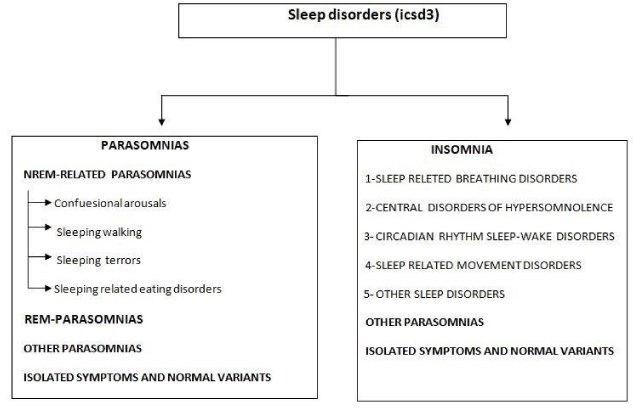
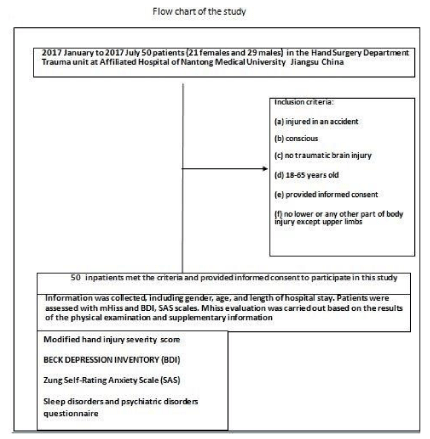
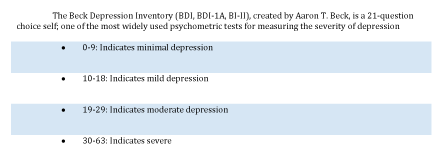
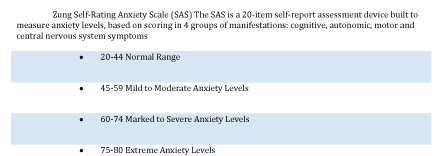
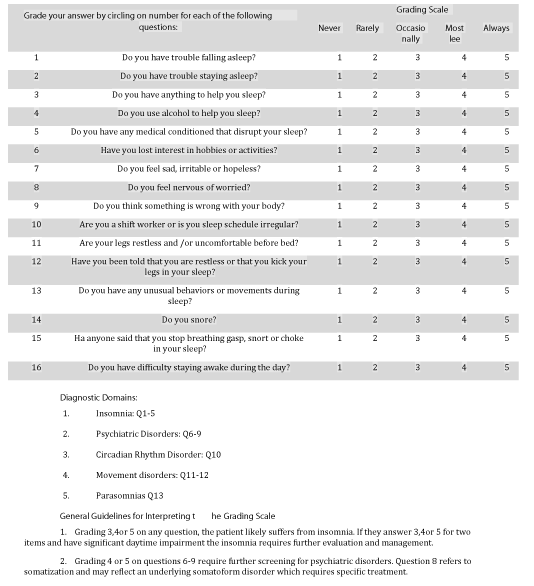

Sign up for Article Alerts